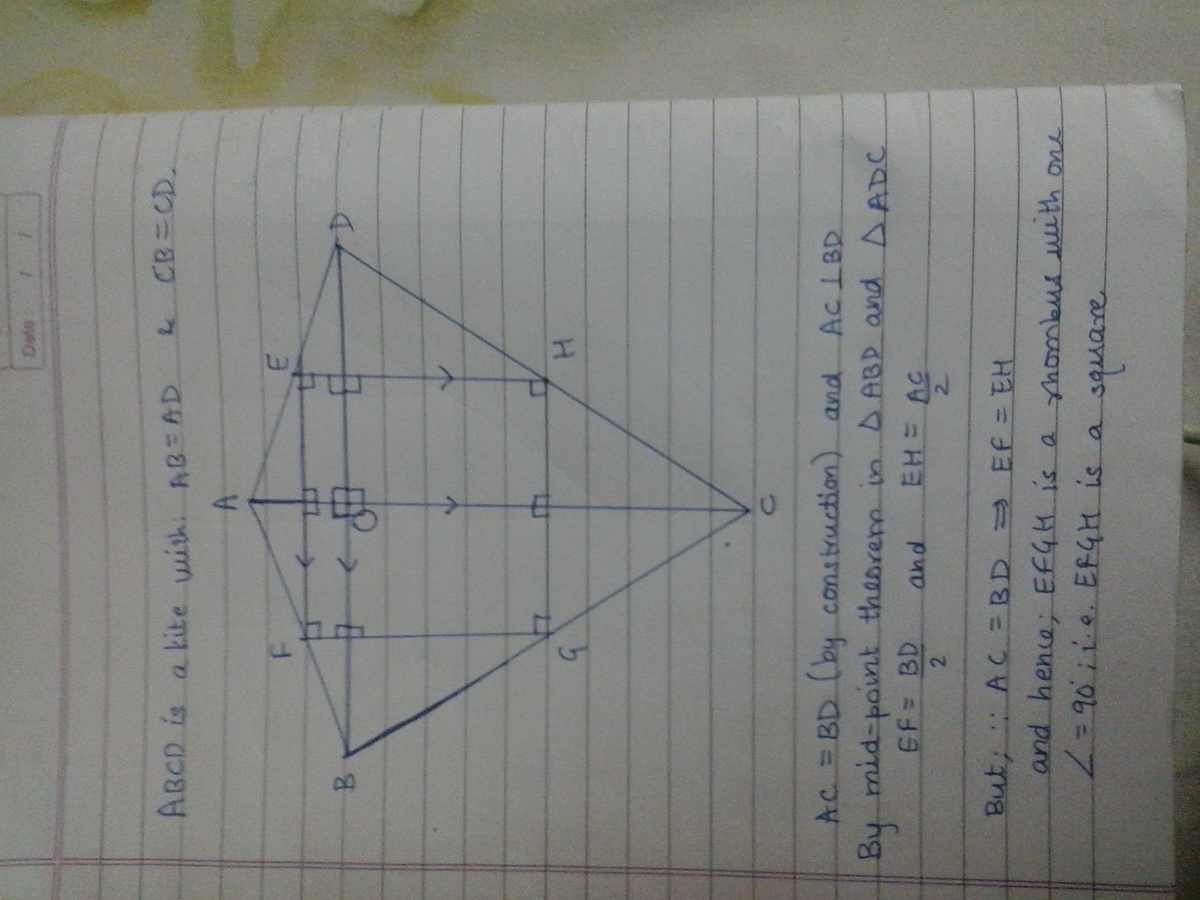Quadrilaterals!
Once, while casually discussing Quadrilaterals, a dispute arose between two friends, A and B.
A: Once, I saw a square formed from the midpoints of the sides of another quadrilateral. And the interesting thing is that the outer quadrilateral wasn't a square!!
B: Aha! I caught you! It's impossible to make a square from the midpoints of the sides of another quadrilateral until and unless the outer quadrilateral is a square. I can prove it.
A: I can prove my point too.
B: So, let us go to my home, and see you lose.
They both went to B's home and resolved their confusion. Who must have won the argument?
This section requires Javascript.
You are seeing this because something didn't load right. We suggest you, (a) try
refreshing the page, (b) enabling javascript if it is disabled on your browser and,
finally, (c)
loading the
non-javascript version of this page
. We're sorry about the hassle.

This shows how A can do this and win.